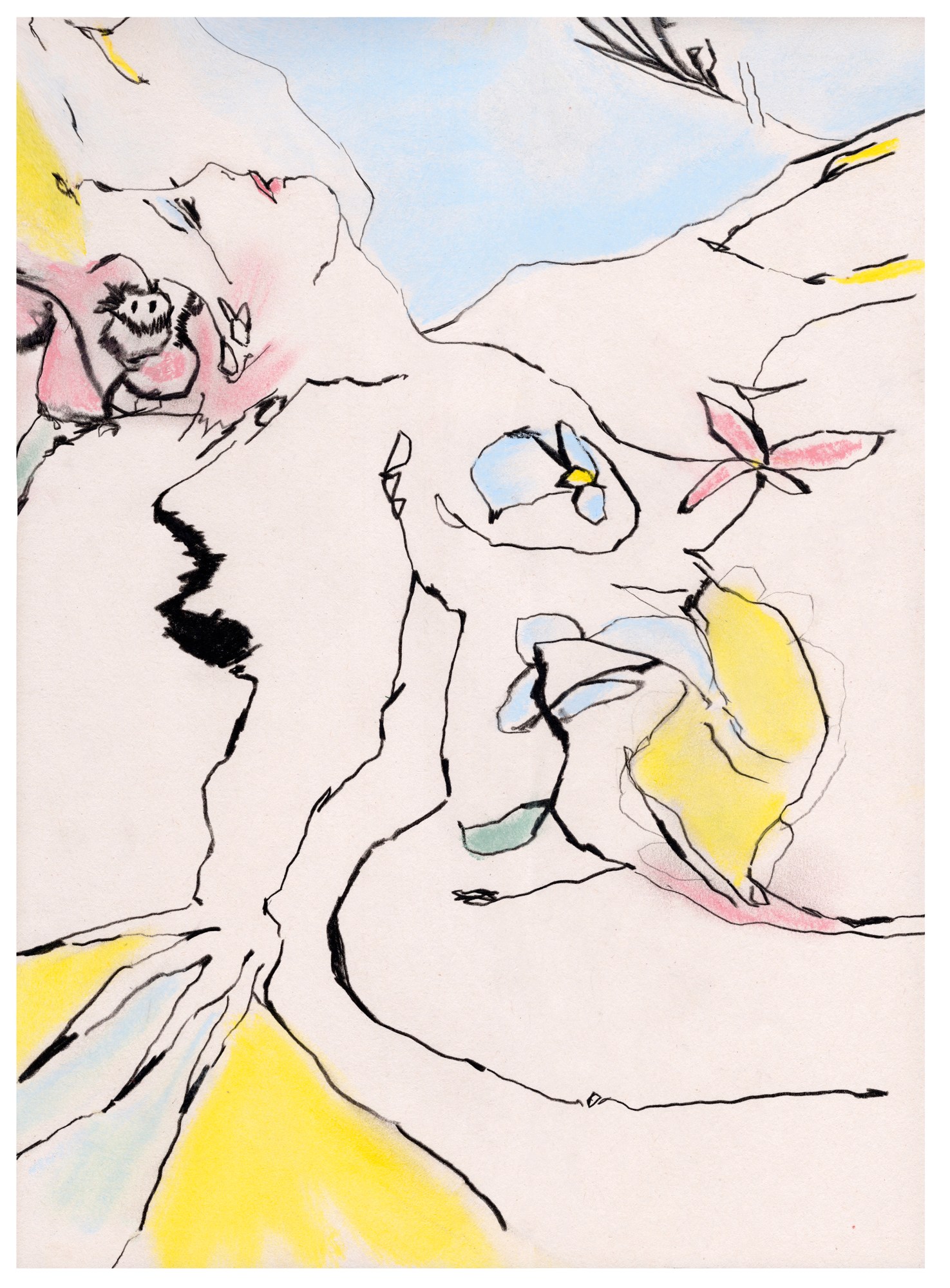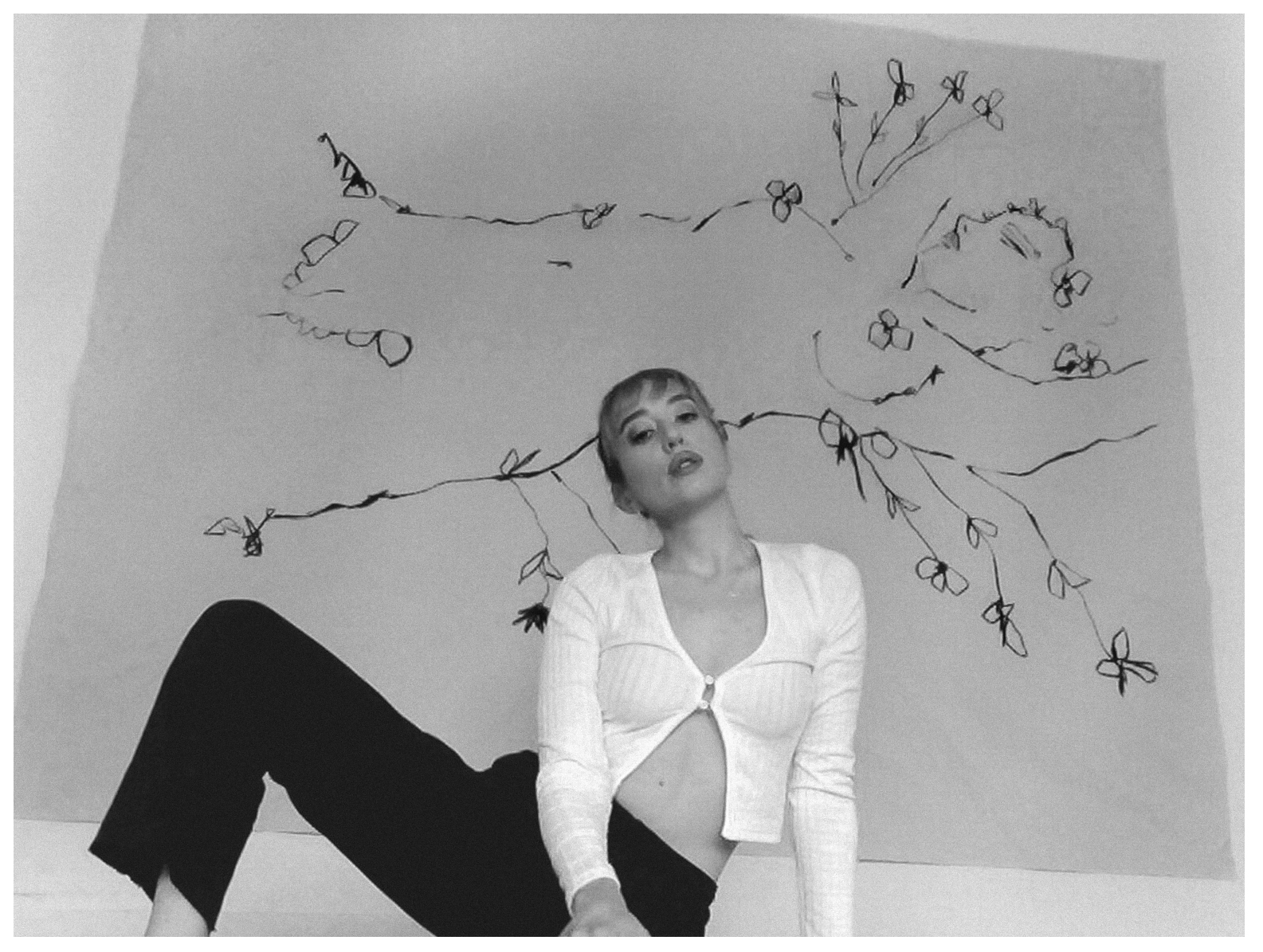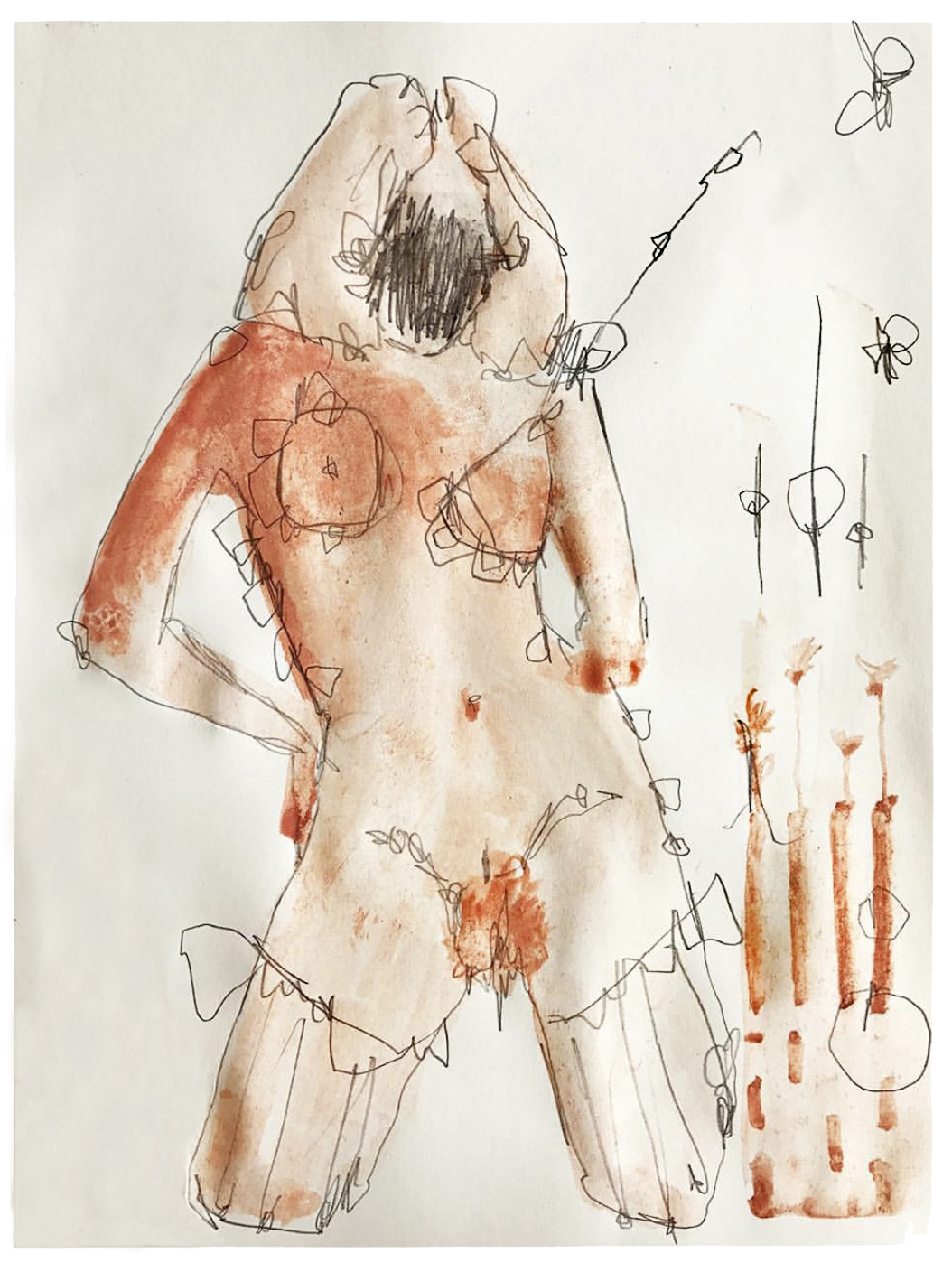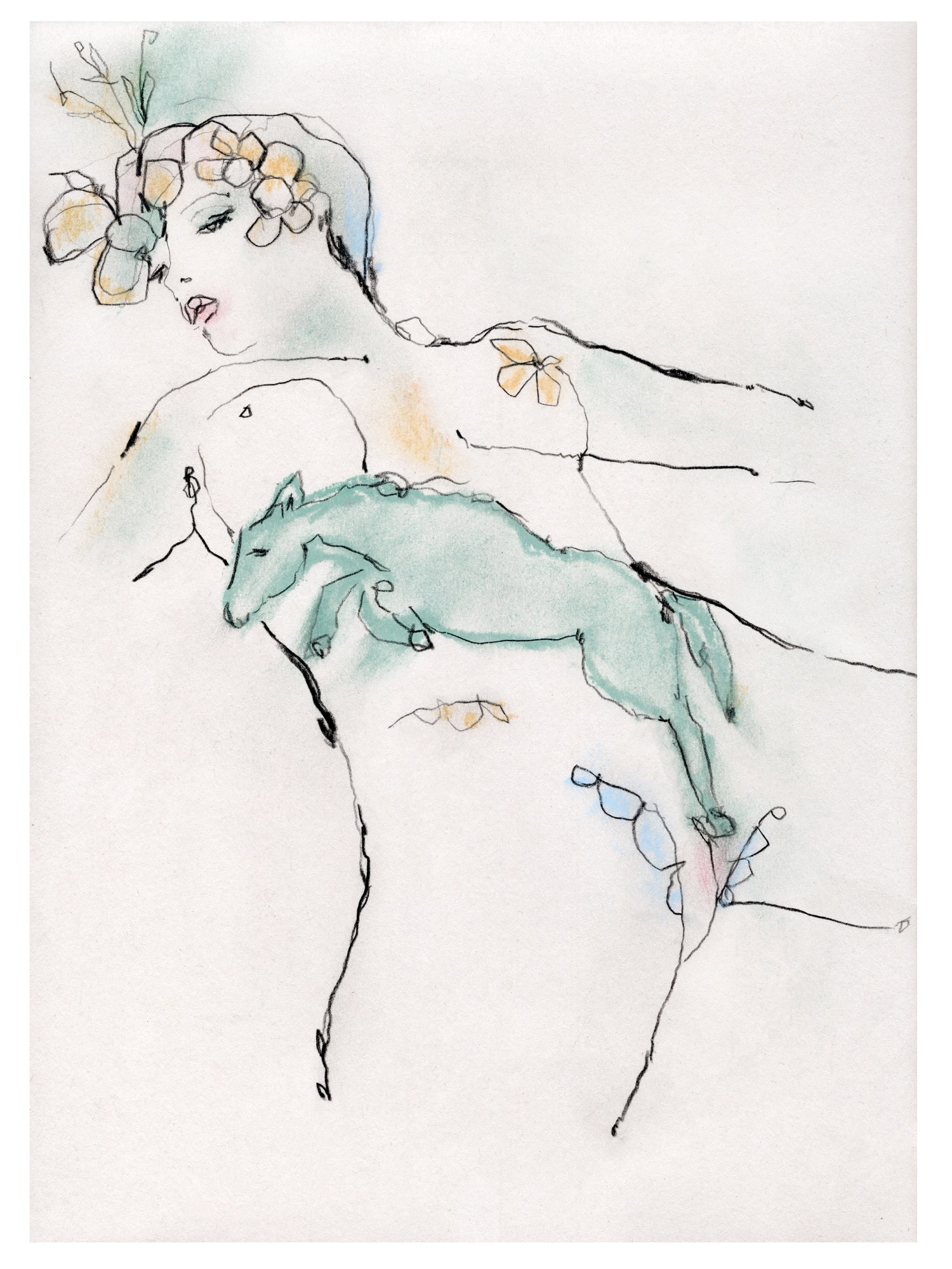In the five months since Roe V Wade was overturned in the US, folks nationwide have been grappling with both the intended and unintended repercussions, both for people in need of abortions and on the culture at large.
While two-thirds of Americans support keeping Roe V Wade and 57% affirm the right to seek an abortion for any reason, the overturning of nearly five decades of federally-guaranteed legal abortion access is going to be one of the foremost influences on the 2022 midterm elections. The benchmark for when life, and thus personhood, begins for a fetus is when life and personhood can now end for the pregnant person.
For California-based artist Natalie Krim, the words life and choice hold momentous weight and distinct meaning, after her own abortion in 2017. Her dreamlike depictions of pleasure reclaim agency over her own autonomy and sexuality, but the need to process her emotions and express herself through creating art has remained integral and only grown within her since the procedure.

“In 2017, my partner and I made the conscious and mutual decision to become pregnant. However, once I became pregnant, I found myself in a situation pressured by indecision, fear and control, which ultimately resulted in abortion. I surrendered my choice, which I recognize is a choice in and of itself, for my partner’s future. […] It is a deep sadness I will always carry, but it was the best decision I could make at that time to protect myself. In the end, it gave me a chance at life,” she says. “Creativity, in a sense, can be its own ‘birthing’ experience, and so my work has chronicled this in subtle and not so subtle ways.”
Artwork has always had a seminal place in reproductive rights advocacy, from Barbara Kruger’s painfully accurate “Untitled (Your body is a battleground)” (1989) to Guerrilla Girls’ public service message demanding for “a return to traditional values on abortion,” which sheds a light on how abortion in the first few months was legal before the mid-19th century (even within the Catholic Church, which then forbid it in 1869). These works remain as relevant today as they were at their initial release, and shown in the wake of Jenny Holzer’s epochal “Abuse of power comes as no surprise” (1983), they serve as a potent reminder that current events unfolding around Roe V Wade should not be shocking — if you’re paying attention.
Of Natalie’s work, artist and collaborator Aaron Rose says: “[Her] works are deeply psychological and one could even say political. In concept, one could compare them to Cindy Sherman’s intimate auto-portraits or even Dorothy Ianonne’s wild psychedelic drawings. Like Krim, both artists used sexuality as an entrance point, but then once inside, boldly revealed to us the inner workings of their collective souls.”

“Art has the power to shape people’s perception, make invisible things visible, be a force for empathy and humanize experiences that are not well understood,” Natalie says. “In its creation, it can be a way to process a difficult time and moment in our society. I personally use my artwork as a way to process. The artist’s role is also to reflect a truth about the world, and I think a lot of the pro-choice argument is about the fact that there are multiple truths, multiple value systems — not just one.”
The idea that Christian religious values could influence abortion legally and culturally is a more recent phenomenon in American history. Abortion had traditionally been seen as a Catholic issue by many Evangelicals who’d been mobilizing in defense of racial segregation when Roe V Wade was first decided in 1973. Opposition to abortion then became an energizing force to rally and mobilize Evangelicals in the early 80s, when the decade’s political conservatism was on the rise.
“So much of the conversation that pro-lifers have around choice neglects compassion and the understanding of the many reasons why abortion is a viable form of healthcare,” Natalie says. “The other issue I see is the belief that an individual’s deeply held personal convictions should be institutionalized and imposed on all of society as law. We need to get to a place where we understand that people must make choices that are right for their bodies, their futures, their belief system and their families. This is what the pro-life movement does — it universalizes a value system around a decision that could not possibly be more intimate, individual and personal.”

In the midst of all its public conjecture, abortion is seldom seen as the private and personal medical decision it actually is, and those who have experienced it are too often silenced. Their pain and experiences are perpetually diminished and exploited to serve the political agendas of the many who will never have to make this choice (or lose the right to do so). Whether it’s Republicans imposing their own personal interpretations of holy morality upon the wider public or Democrats basing their platform on abortion rights to fundraise without actually protecting those rights, choice itself is often illusory for marginalized people.
“When a choice is pushed on our bodies — whether it be from a partner, a parent and now the government — it takes a toll on our spirit; it leaves more room for death than it does life,” she says. “Because of the political nature of this subject, you are robbed of having your personal experience with abortion. A choice can be right and be painful. The moment that you articulate your personal pain and grief, you see it being shaped against you into an argument against choice. So you say nothing. You carry it and it transforms you. I wanted to share it through my work… it is an incredibly stigmatized grief.”

Natalie’s artwork has been a conduit for mourning and moving through this grief. While her whimsical fine-line drawings, imbued with both a tender vibrancy and powerful intimacy, are portals into her own journey, they live and breathe on their own to ask viewers to accept and honor their entire selves — all their sorrows and joys, losses and desires, fears and triumphs. They are affirmations of self-worth and deserving love and pleasure, even in the aftermath of trauma.
“I wanted to create things that other people who have lived that experience could seek refuge in. I’m a big believer in the power of storytelling as a connecting force — we can provide space for people to share and to listen,” she says. “From… images of blood coming from between the legs of hopeful figures, to larger pieces where I reclaim my space, to the more surreal and spiritual drawings depicting a dream-like dissociation, abortion is an underlying theme in my art. Sexual liberties are reproductive liberties, and that idea weaves in and out of my drawings.”

For every side and every truth of abortion — in public and in private — it is irrefutable that the foundation of abortion policies in the US being based on fetal personhood belies criminal outcomes and further subjugates the most marginalized, targeted people in this country.
“There are already incredible acts of solidarity, mutual aid and radical courage to support the thousands of pregnant people that are already being impacted by these changes. That being said, those who will be alone are the most marginalized in our society — people who are prevented from seeking care by their partners, those who cannot access networks or services in a language that they understand, those who have no resources to even find the resources that are out there. It’s all quite complicated and comes down to power, the trust deficit, equity, privacy and the protection of our lives,” she says. “I feel incredibly lucky to have had the support and resources of those around me and I will continue to do what I can to give that same support to others — to support our right to choose.”
The right to choose, the right to life that is the right to pleasure and love, and the right to be fully heard and seen are at the heart of Natalie’s art. In reimagining and reclaiming her own narrative, she also champions those with similar experiences to reclaim and celebrate theirs. The emotional and spiritual anatomy of her artwork ultimately is a looking glass for viewers to deep dive into their own psyches — to know and love themselves more deeply.

Subscribe to i-D NEWSFLASH. A weekly newsletter delivered to your inbox on Fridays.


